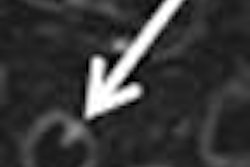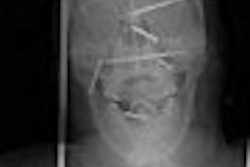Small variations can make a big difference when it comes to radiation dose. And as the proliferation of multislice CT scanners raises concerns about increasing radiation dose levels, it’s time to go back to the basics -- mA and kVp -- and find out how to reduce radiation while still creating those nifty diagnostic images.
It’s a tough call. Ramp up the mA by 100 and the radiation dose doubles. Increase the kVp from 80 to 140 and the radiation dose goes up four times. On the other hand, if mA is modulated it impacts the noise in the image, and if kVp is modulated it affects the attenuation of tissues as well. This calls for a balancing act where the image quality is not affected and the patient is not overdosed either.
“The reason that this is important is because the mA and kV vary widely between institutions,” said Dr Sanjay Saini, professor of radiology at Harvard Medical School and director of CT services at Massachusetts General Hospital. Saini spoke at the International Symposium on Multidetector-Row CT in San Francisco, U.S, last month, highlighting one of the hottest issues in CT practice today.
His statement is supported by a U.K. study done a few years back showing the wide variation in mA and kV for the same applications (British Journal of Radiology, May 1997, Vol. 70:833, pp. 437-439).
And clearly, if the BJR study is an indicator of the current situation, there is plenty of room for tweaking mA and kV. More recently, another study found there was a wide range of mA selection for patients of the same weight (American Journal of Roentgenology, December 2002, Vol. 179:5, pp. 1101-1106).
And if patient weight is indicative of patient size, the study findings point to patients being overdosed or underdosed.
Automatic exposure control
The automatic exposure control (AEC) feature in scanners can help to correct this problem to some extent. AEC modulates the mA used for the acquisition automatically, using either in-plane modulation or Z-axis modulation, depending on which vendor manufactured the scanner.
In in-plane modulation or X-Y plane modulation, once the technologist selects the appropriate mA, the attenuation of the tip of the x-ray beam is measured by the detector arm in the first half of the rotation. This information is then used in the next half of the rotation to modulate the mA.
In Z-axis modulation, the radiologist determines the mA based on how much noise can be tolerated in the image. The mA then automatically varies based on the density and size of the area being scanned. So in effect, the mA can vary from 93 for the thorax, kick up to 112 in the upper abdomen, drop to 76 for the mid-abdomen, and then kick up again to 170 for the pelvis.
AEC can result in substantial dose reduction. A Belgian study found a 15% to 20% reduction in the mA being delivered for images of the chest and abdomen (Tack et al, AJR August 2003, Vol. 181:2, pp. 331-334).
At MGH, where Z-axis modulation has been in use for about a year, researchers found it resulted in a mean mA reduction of 40% in 54 of 62 study subjects. In eight subjects, the dose was higher by 10%. Or in other words, the AEC showed small individuals were being overdosed and large individuals underdosed.
Radiologist intervention
Here’s where a radiologist can help. The radiologist needs to judge the permissible level of noise in an image based on the clinical situation. In Saini’s experience, using this approach for kidney-stone protocol resulted in the effective dose being one-sixth of the usual dose.
“When you have younger patients or patients in whom you are inherently looking at high-contrast acquisitions, you might prospectively choose to have a noisier image,” Saini suggested. This may be as opposed to a cancer patient where dose reduction is not a priority, or a low-contrast resolution where smoother images are needed.
Optimising kVp
The impact of changing the kVp is more complicated than the mA. When the kVp is lowered, the mA has to be ramped up substantially. So for dose optimisation, the kVp is kept constant at 120 or 140, and mA is then varied based on the requirement (Radiology, November 2000, Vol. 217:2, pp. 430-435). Iodine has a higher attenuation at a lower kVp acquisition than at a higher kVp, so the dose of contrast media required for CT angiography can be reduced.
Based on these factors, Saini said the approach MGH had arrived at was a kVp of 140 for routine acquisitions, and a kVp of 100 for CT angiography. In case of dual-phase image studies, it was 120 for the arterial phase and 140 for the venous phase. As a general rule, the kVp is lower than the typical 120 or 140 for angiographies, small structure, low-density structures and paediatric CT.
“Having selected your kVp, allow the machine to pick up mA, and here what you have to think about is what is the noise level that you are willing to tolerate in an image,” Saini said. “If you think about kV and mA, you should be able to enhance your image quality and reduce the dose to the individuals.”
By N. ShivapriyaAuntMinnieIndia.com staff writer
July 21, 2004
Copyright © 2004 AuntMinnie.com




















